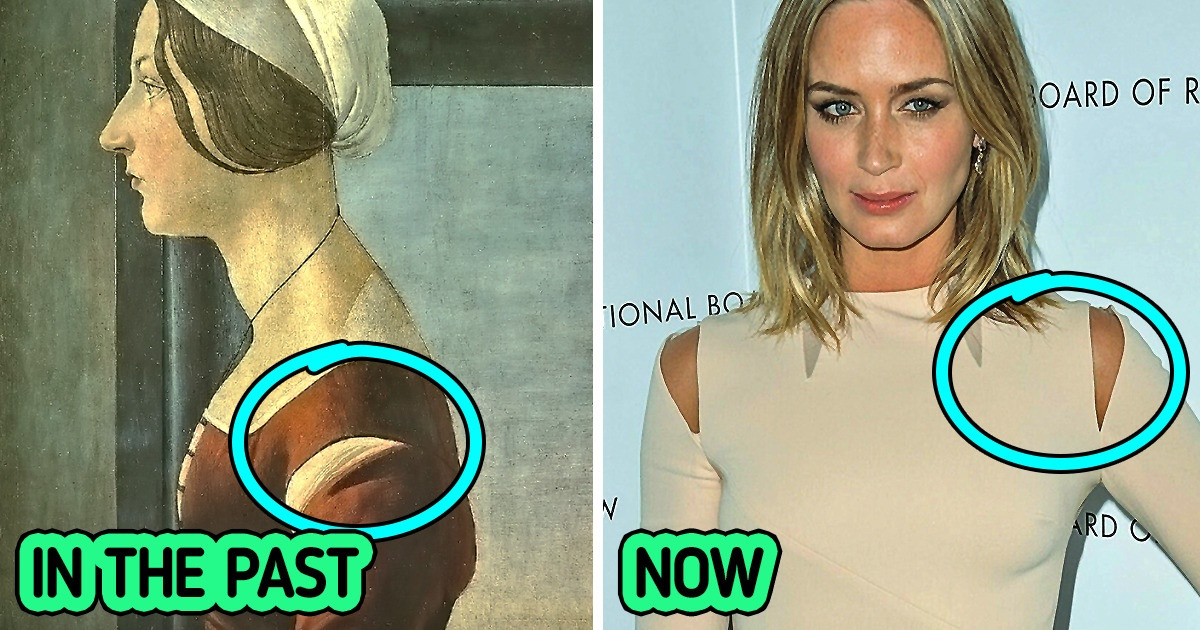11 Fashion Tips to Achieve a Chic and Polished Look


We often feel happy or sad when clothes that were trendy 10 or 20 years ago come back into fashion again. But when creating a new collection, fashion designers are often inspired by trends that are centuries or even millennia old. So, the Sumerians decorated their clothes with fringe, and dresses with slashed sleeves were considered chic in the Tudor court.
At Bright Side, we studied the history of fashion and found elements of modern clothes that have been adopted from the fashion of past centuries.
In the 1890s, women began to play various sports. One of the most popular sports was cycling. However, you couldn’t fully enjoy it due to the female clothing of those times. Riding a bicycle in wide skirts was not only uncomfortable but also dangerous. Therefore, dressmakers invented a new item of clothing — culottes, which were a compromise between comfort and the rules of decency. Culottes are still popular today.
In the mid-to-late 19th century, crinolines were replaced by bustles. To create the necessary silhouette, the ladies attached a special pad just below the waist. These elements finally went out of fashion in the early 20th century and are almost never used in modern clothing. However, similar outfits can be seen at the shows of prominent couturiers. Bustles are also used to create wedding gowns or evening dresses.
During the time of the Sumerians, women and men wore kaunakes. A kaunake was a wrap skirt or dress decorated with a fringe. To make the fabric look like real fur, tufts of rolled yarn or wool were threaded through the woven cloth. These clothes often left one shoulder open. Sumerian motifs can still be found in the collections of modern fashion designers.
In the 15th century, nobility flaunted clothing with holes. Cuts were used to decorate any piece of clothing, including shoes. But most often this fashionable trend was used on sleeves.
Small cuts showed parts of the chemise a person had on. At the same time, some moral guardians considered these dresses indecent. Ripped clothing regained popularity in the ’70s and ’80s of the last century as a part of punk fashion.
Ladies have worn puffy sleeves for centuries. In the 19th century, a new silhouette came into fashion — gigot, which means a leg of mutton. This sleeve was very puffy around the shoulder, diminishing in size toward the elbow and becoming tight at the wrist.
More than 6 feet of fabric was used to make just one sleeve. Because of these sleeves, it was sometimes difficult for a lady to pass through doorways or use their hands. Some fashion critics even made fun of this trend. Despite this, puffy sleeves are trendy even in present times.
This clothing detail existed even before 1810, but it was usually made from the same fabric as the entire dress. Later, sleeves made from a different fabric or in a different color became trendy. These sleeves were worn under or over regular sleeves.
However, in those days they were attached to the outfit. Nowadays, they can be worn directly on the arms.
The industrial manufacturing of lace gave rise to a style of dresses made with mesh coverings and lace sleeves. It was difficult to make richly decorated fabrics on the sewing machines of that time, so the fabric was embroidered by hand.
Light net covered denser and heavier materials. Detachable sleeves were made from net or tulle, which were worn over short lantern sleeves. Similar outfits can still be seen on the red carpet and runway.
In the Middle Ages, ladies used to wear dresses in various styles. But there was one thing they had in common — many layers. The more noble a woman was, the more layers of clothing she could wear, using luxurious fabrics.
One of the popular outfits was a tight-fitting gown, sometimes tied with a belt. A surcoat, or a sleeveless overdress, was worn over a kirtle. The outermost layer could be a coat. Medieval trends can still be found in modern attire.
In the late 15th century — early 16th century, sleeves were often attached to an outfit with ribbons, ropes, or buttons. And since this clothing element didn’t fit snugly enough to the bodice, an undergarment could be seen through the cuts. These sleeves were a convenient invention because a lady could easily replace them with new ones without taking off her dress.
In the second half of the 18th century, redingote gowns came into fashion. Until that time, men and women wore them when riding horses, and this piece of clothing was considered outerwear. Later, ladies began to make their dresses like redingote gowns.
These dresses were worn over corsets and skirts. The dress was fitted, with a deep V-neckline which was sometimes draped with thin scarves. Now, clothing with a similar cut can still be found at fashion shows and in modern stores.
Since the 15th century, ladies have used various constructions to add volume to their skirts. At first, they used the farthingale for these purposes, then the pannier, and in the 19th century, the crinoline came into fashion. Women used to wear several underskirts under their dresses, which were made of cotton or linen with the addition of horsehair.
In the middle of the 19th century, they were replaced with metal structures. The crinoline made it possible to achieve the hourglass silhouette that was so fashionable in those days. Throughout the 20th and 21st centuries, the fashion for hoop skirts has returned from time to time.
At the beginning of the 20th century, many women began to work. For these purposes, they needed practical clothing. Therefore, the first ensembles were created, consisting of a skirt, a blouse, and a jacket. They were liked by many women, and it was comfortable to travel in a suit.
A woman could change a soiled blouse without removing her skirt, the waist was emphasized with a ribbon or strap, and the collar was decorated with a narrow tie.
In the middle of the 19th century, ladies began to show their shoulders. The neckline became deeper in evening gowns and was decorated with a wide collar made of fabric or lace.
This detail was called the Bertha collar. Only the representatives of the upper and middle classes could afford clothes with this element. Dresses with the Bertha collar are still popular and can be found both on the runway and in ordinary clothing stores.
What fashion trend of the past do you like? Tell us in the comments below.











